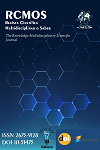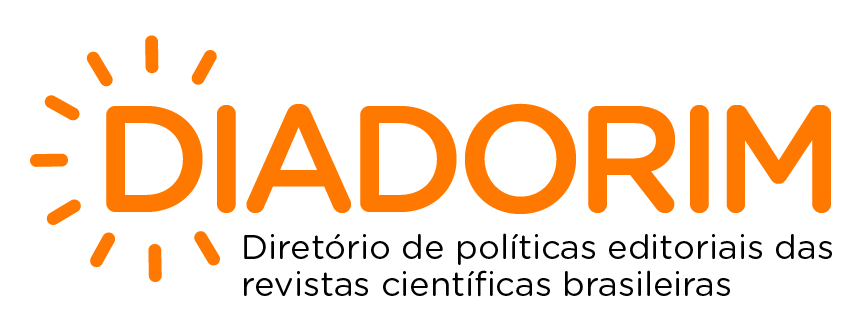Future perspectives: investigating the relationship between zika virus and congenital anomalies in newborns
Future perspectives: investigating the relationship between zika virus and congenital anomalies in newborns
DOI:
https://doi.org/10.51473/rcmos.v1i1.2025.1132Keywords:
Zika Virus, congenital anomalies, pregnant women.Abstract
A global concern due to its association with congenital anomalies, such as microcephaly, in affected pregnancies. The Zika Virus has rapidly spread, leading to a coordinated global response to address this public health emergency, highlighting the importance of understanding the effects of the Zika virus on pregnancies to guide effective public health policies and clinical practices. Objective: To investigate the relationship between the Zika virus and its consequences on pregnant women and developing fetuses, aiming to comprehend the impacts of virus infection during pregnancy. Method: This current study constitutes an exploratory and qualitative literature review conducted in March 2024. Secondary research sources available in accessible databases for full reading were used. The research was conducted through the analysis of books, articles, and protocols available on electronic platforms such as Google Scholar, Scielo, and PubMed, covering the period from 2019 to 2024. Results: The study elucidates the severity of the impacts of the Zika virus on pregnancies, highlighting the relationship between maternal infection with the virus and the appearance of congenital anomalies in newborns. Conclusion: A comprehensive understanding of the risks associated with Zika virus infection during pregnancy is crucial to guide effective public health policies and clinical practices, aiming to protect the health and well-being of pregnant women and their babies, to mitigate the adverse impacts of the Zika virus on future generations.
Downloads
References
BRASIL, P., Sequeira, P. C., Freitas, A. D., et al. (2019). Zika virus infection in pregnant women in Brazil: study protocol for the evaluation of the potential risks to embryo-fetal neurodevelopment (Zika epiRISK). BMC Infectious Diseases, 19, 638. Acessado em: 30 de mar 2024.
FERRARIS, P., Yssel, H., & Missé, D. (2019). Zika virus infection: an update. Microbes and Infection, 21(8–9), 353-360. ISSN 1286-4579. Publicado: Nov/2019. Disponível em: https://doi.org/10.1016/j.micinf.2019.04.005. Acessado em: 17/03/2024. DOI: https://doi.org/10.1016/j.micinf.2019.04.005
FREITAS, P. S. S., Et al. Síndrome congênita do vírus Zika: perfil sociodemográfico das mães [Congenital Zika syndrome: sociodemographic profile of mothers; Síndrome congénito por el virus del Zika: perfil sociodemográfico de las madres]. Publicada em: 2019. Rev Panam Salud Publica, 43, e24. doi: 10.26633/RPSP.2019.24. Acessado em: 17/03/2024. DOI: https://doi.org/10.26633/RPSP.2019.24
GARBIN, C. A. S. et al.. Conhecimento e atitude das gestantes de alto risco sobre a transmissibilidade do vírus zika. Ciência & Saúde Coletiva, v. 26, n. 1, p. 233–240, jan. 2021. Disponível em: https://www.scielo.br/j/csc/a/dcvjXKk8pzhKgJVvm3GrBXt/?lang=pt&format=html#ModalHowcite. Acessado em: 30/03/2024. DOI: https://doi.org/10.1590/1413-81232020261.25752018
LIMA, F. M. e IRIART, J. A. B. . Significados, percepção de risco e estratégias de prevenção de gestantes após o surgimento do Zika vírus no Brasil. Cadernos de Saúde Pública, Publicado em: fev de 2021. v. 37, n. 2 [Acessado 30 Março 2024], e00145819. Disponível em: <https://doi.org/10.1590/0102-311X00145819>. ISSN 1678-4464. https://doi.org/10.1590/0102-311X00145819. DOI: https://doi.org/10.1590/0102-311x00145819
LOURO, N. S.; CARACTERIZAÇÃO DOS CASOS NOTIFICADOS DE ZIKA VÍRUS EM GESTANTES EM UM HOSPITAL DA REGIÃO CENTRO-OESTE. Publicado em: 2019. Disponível em: http://revista.cofen.gov.br/index.php/enfermagem/article/view/2211/606. Acessado em: 27/03/2024.
Musso, D., Ko, A. I., & Baud, D. (2019). Zika Virus Infection -After the Pandemic. The New England Journal of Medicine, 381(15), 1444-1457. DOI: https://doi.org/10.1056/NEJMra1808246
OLIVEIRA, J. V. R., de Almeida, M. D. F., Dornellas de Barros, H. R., & Silva, A. L. (2020). Zika Virus Infection during Pregnancy and Congenital Zika Syndrome: What the Evidence has Shown Us so Far? Revista da Sociedade Brasileira de Medicina Tropical, 53, e20200146. Acessado em: 30 mar 2024.
SOUZA, L. M.; VOLTARELLI, A.; LEONARDI SOUZA, M. J. Estudo de aumento de casos de óbitos embrionários e fetais diagnosticados por ultrassonografia durante o surto de Zika vírus. Global Academic Nursing Journal, [S. l.], v. 1, n. 2, p. e30, 2020. DOI: 10.5935/2675-5602.20200030. Disponível em: https://globalacademicnursing.com/index.php/globacadnurs/article/view/60. Acesso em: 18 mar. 2024. DOI: https://doi.org/10.5935/2675-5602.20200030
TEIXEIRA, G. Al. et al. Análise do conceito síndrome congênita pelo Zika vírus. Ciência & Saúde Coletiva. v. 25, n. 2 pp. 567-574. Publicado em: fev/2020. Disponível em: <https://doi.org/10.1590/1413-81232020252.30002017>. ISSN 1678-4561. https://doi.org/10.1590/1413-81232020252.30002017. Acessado em: 17/03/2024. DOI: https://doi.org/10.1590/1413-81232020252.30002017
WERNER, H.. Zika virus infection. Radiologia Brasileira, v. 52, n. 6, p. IX–X, nov. 2019. Disponível em: https://www.scielo.br/j/rb/a/HRYH8pSWpgy5St3BFC5czbw/?lang=pt#ModalHowcite. Acessado em: 30 mar 2024. DOI: https://doi.org/10.1590/0100-3984.2019.52.6e3
Downloads
Additional Files
Published
Issue
Section
License
Copyright (c) 2025 Priscila Barbosa Onofre, Douglas José Angel (Autor)

This work is licensed under a Creative Commons Attribution 4.0 International License.












